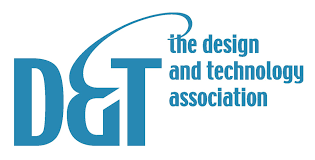The Education Policy Institute (EPI) has published a new study on the state of D&T, ‘A spotlight on Design and Technology study in England: trends in subject take up and the teacher workforce’.
The research, which is the first study to comprehensively examine trends in the subject over the last ten years, shows that 44% of students took D&T GCSE in 2009, but this fell by half to just 22% of students in 2020.
Entries for students at A level have also declined over the same period, as more students now opt for vocational engineering qualifications. The analysis finds that GCSE students attending free schools and sponsored academies are less likely to enter D&T, while at A level, students in independent schools are most likely to enter the subject.
The report also uncovers significant local and regional variation in D&T take up, with entries in local authorities ranging from nearly 40% of pupils taking D&T at GCSE in Herefordshire, to just 4% of pupils taking the subject at GCSE in Middlesbrough.
Choosing D&T as a subject at GCSE level is shown to be particularly critical to continuing study in the subject at 16-19 level. Of those who did not study D&T at GCSE, less than 2% opted to take up the subject at the next stage of education.
This shows that without the option or encouragement to begin studying D&T an early age, students are far less inclined to pursue D&T subjects at a higher level of education.
The study identifies several developments that have coincided with the considerable decline in take up. Between 2011 and 2020, the number of D&T teachers fell by half from 14,800 to 7,300, with the government failing to meet its D&T teacher recruitment targets. Significant school accountability reforms such as the EBacc and Progress 8, and qualifications reforms, such as the introduction of new GCSEs, also occurred during this period.
The new findings on the state of D&T come as the government continues to roll out a series of major reforms to vocational education in England, including the introduction of T levels, apprenticeship reforms, and Institutes of Technology.
The full report can be accessed here.
Key findings
Design and Technology entries: headline trends
- The number of students entering D&T qualifications has declined considerably in recent years: just 22% of GCSE students had at least one D&T entry in 2020, compared to 44% in 2009.
- In 2009, there were 280,000 total GCSE D&T subject entries – but by 2020 this had fallen to 136,000.
- Entries at 16-19 study have also declined by 2020 – around 2% of students entered a Design and Technology A level or a level 3 vocational engineering qualification.
There is significant variation in D&T take up by pupil group, schools and regions
- Student background: students are most likely to take up D&T at GCSE if they are from White British (24%) and Chinese (22%) backgrounds, while Gypsy/Roma (16%) and Black African (16%) students are least likely.
- Schools: At GCSE level, free schools and sponsored academies have the lowest entry rates (18% of students) of common of providers, while academy converter schools had the highest (25%). At A level, entries in independent schools were highest (4%), while those in sixth form colleges (1%) and general FE colleges (0.1%) were very low.
- Local authorities: the areas with the highest rates of D&T take up at GCSE include Herefordshire, (39%) Dorset (34%) and South Gloucestershire (33%), while the lowest include Kingston upon Hull (8%), Barnsley (7%), and Middlesbrough (4%).
- Regions: D&T GCSE entries are particularly low in London, the North East and Yorkshire and the Humber (all around 18%), while rates are higher in the South West the East Midlands, the East of England and the South East (24-26%).
Taking up D&T at a younger age is crucial to continuing the subject at 16-19
- Pupils who did not enter D&T GCSE were highly unlikely to continue studying the subject in the 16-19 education phase – just 2% did. This compares to 17% of those that entered an Electronic Products GCSE and 16% of those that had entered a systems and control GCSE.
- These findings indicate that without the option or incentive to begin studying D&T at an early stage, pupils are unlikely to develop sufficient interest or be inclined to pursue D&T subjects at a higher level.
- This important link may also mean that the decline seen at GCSE level signals a further decline in entries at 16-19 level in the future.
Potential factors driving the fall in D&T entries
- The large decline in D&T teachers seen over the last decade could be contributing to the decline in entries, though this link is unclear. Between 2011 and 2020, the number of D&T teachers in schools fell significantly from 14,800 (6% of all teachers) to 7,300 (3%).
- Teacher recruitment for D&T met just 23% of its overall target in 2021/22. There are currently fewer financial incentives on offer for D&T teachers, compared to other subjects such as maths and physics.
- School accountability reforms such as the introduction of the English Baccalaureate in 2010 and Progress 8 in 2016, and qualification reforms such as the introduction of reformed 9-1 grade GCSEs, have all coincided with the decline. Capital restraints faced by some schools may have contributed to the fall.
- While there has been a significant decline over the last ten years, a decline in D&T has occurred for nearly 20 years, indicating that there are other, wider factors at play. In 2001, DfE statistics show that almost 70% of pupils were entered for a D&T GCSE.
Recommendations
- The government should consider the risks of a continued decline in student entries into D&T, including whether the long-term decline could hinder efforts to reduce skills shortages in areas such as engineering and product design.
- The government should consider whether supporting D&T at GCSE could be beneficial to its post-16 reform agenda, including the roll out of T levels.
- If the government intends to reverse the considerable decline in D&T entries, specific policies that encourage pupil take up will be required, particularly at GCSE level.
This report is funded by a group of partners:
![]() The Institution of Engineering and Technology (IET)
The Institution of Engineering and Technology (IET)
 The Design and Technology Association
The Design and Technology Association




